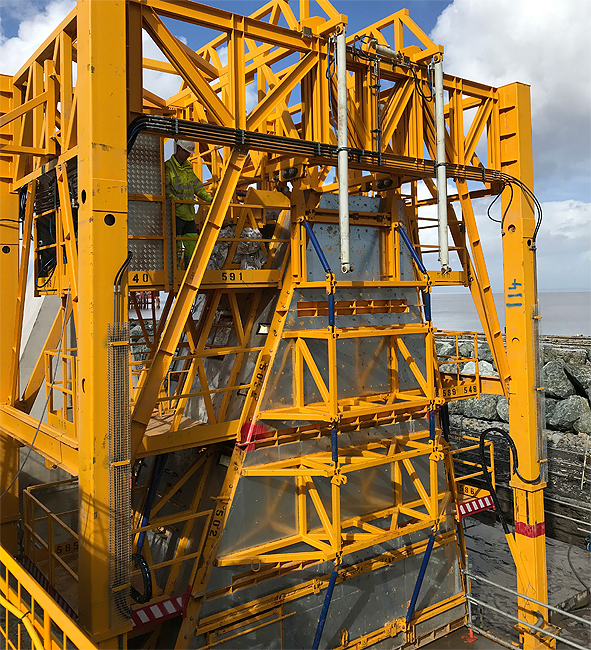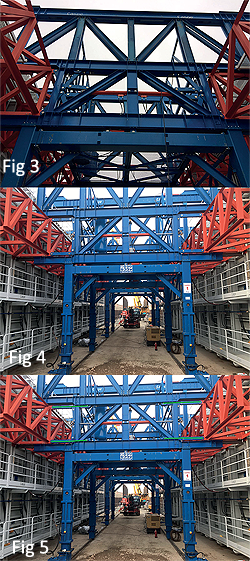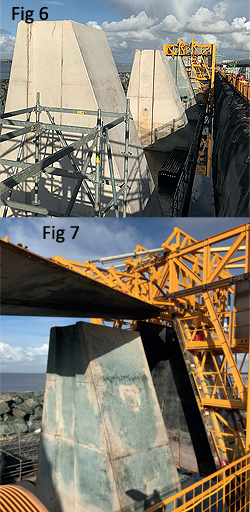
Problem solvers
Over the years since it was established, Wenlock has developed a knack for supplying innovative solutions to very complex problems. This mostly derives from the experience and skills accumulated by its founder, Roberto Garziera, a leader in construction design and engineering for over 20 years, who, after a long career of designing and consulting across a variety of  industries has contributed new ideas and products to many sectors, such as pulp and paper, plastic packaging, special machinery, consumer products, steel constructions and infrastructures. In many cases his solutions, spanning from cookware to full round tunnel lining systems, have been patented and still appear on the market years later.
industries has contributed new ideas and products to many sectors, such as pulp and paper, plastic packaging, special machinery, consumer products, steel constructions and infrastructures. In many cases his solutions, spanning from cookware to full round tunnel lining systems, have been patented and still appear on the market years later.
Two infrastructure projects recently delivered by Wenlock present very interesting aspects both for innovative design and the benefits to on-site construction, especially in terms of simplification and time saving.
The first project involved the design and delivery of a set of twin travellers for the construction of 1.8km of cut and cover tunnel on the High Speed Train Line near Tortona, Italy. “About 1km of artificial tunnel had to be built overground, therefore requiring both inner and outer wall formwork panels (as shown in Fig 1). With that arrangement,
tie bars were used through the pour,” explained Roberto.
The remaining 0.8km were to be built underground, therefore using internal wall formwork panels only. The outer formworks and the top structure supporting them were removed, resulting in a self reacting arrangement (as shown in Fig 2). A common approach when dealing with a longer cut and cover tunnel, would be mounting the panels on a traveller.
“In this case, the traveller also had to self-react the pour pressure. Wenlock’s solution, a 25m long traveller, resulting from two twinned 12.5m travellers, had a 25m long and 8m high formwork panel. A typical solution for supporting such a large self-reacting panel, but for a much shorter tunnel, could have been using one-sided brackets every 1.25m,” he added.
In addition to an anchor rail at floor level, in a standard traveller the panel pressure would be contrasted by means of a central structure and at least two rows of turnbuckles on each side. In order to enable dismantling, conical pins would be used for connecting the turnbuckles to the panels. By hammering out the conical pins, the tension in the turnbuckle is released and they can be turned freely. Accounting for two pins on each side, every 1.25m, 80 pins would have to be handled twice for each pour: once for setup and again for dismantling.
Based on Roberto’s previous experience with large tonnage press design, and his knowledge of the industry (he is in the top percentile of his field) Wenlock designed a traveller with a very innovative approach: the two panel walls were contrasted, in addition to the anchor rail at floor level, by two large truss beams (painted in red in the pictures). The truss beams were moved by a toggle link mechanism which would allow a 900mm travel, to enable easy inspection and cleaning of the panels (fig 3 and fig 4 show the toggle link mechanism with retracted cylinder ‘formwork open’ and with extended cylinder ‘formwork closed’).
Only two toggle link mechanisms on each side could stand the enormous pour pressure when they were in extended state, since the two ‘arm’ parts were aligned (shown in green in fig 5).
“Additionally, it only required pulling the ‘elbow’ with a modest force for dismantling (fig 3). The advantage was enormous: pulling a hydraulic valve lever instead of manually handling 80 pins and wedges, or two hours of setup and dismantling reduced to ten minutes!” Roberto exclaimed.
Hinkley C project
Another interesting project whose execution drew benefit from Wenlock’s innovative design was for the Hinkley C Nuclear Power Station Sea defence wall.
The wall construction was divided in two phases: pour a number of buttresses at 10m distance from each other, then use the buttresses as stop-end and carry out the intermediate pours with just the side formwork panels. The buttresses had a base approximately 6m wide, were 7m high and were spaced 10m apart (fig 6).
During the preliminary study phase, it was soon recognised that the best equipment for pouring the buttresses would have been a formwork traveller moving on rails. The formwork, reflecting the shape of the buttress, had the shape of a pyramid trunk whose walls were made of plane formwork panels.
The main technical obstacle presented by such a traveller was disengaging the formwork from the pour after it had cured, allowing movement in either  direction in order for the traveller itself to be setup for the following pour.
direction in order for the traveller itself to be setup for the following pour.
“Given the important height of the buttress, either of the wider sides of the pyramid trunk had to be opened in order for the traveller to be able to move away from the buttress pour. In a similar but less critical case, the natural solution would have been hinging the front and back panels along one side and opening them like a door for dismantling. Alternatively, the front and back panels could have been split in the middle, hinged along both sides, and opened like a double door. However, given the large base size (6m) and the fact that the front and back panels’ sides were slanted, it was obvious that this solution was not viable, or it would have created lots of problems of distortion, misalignment and other difficulties,” noted Roberto.
The idea which Roberto suggested turned out to be the simplest and the one which would guarantee less distortion of the panels. The entire front and back panels were hinged at the top and lifted by two hydraulic cylinders. Given the height of the pour (7m), the opening was rather impressive, however it was seamless and simple. After lifting either the front or back panel, the traveller could move away from the buttress pour as shown in fig 7. Once lowered again, the panel’s corners matched perfectly with the side panels because their opening movement did not affect their alignment along their sides in any way: ready for the next pour.
Wenlock is an engineering firm based in the West Midlands specialised in the design of bespoke machinery and devices, special equipment, steel constructions, and industrial products.